The Azores archipelago sits in the mid-Atlantic like a cluster of emerald jewels, each island sculpted by volcanic forces that remain active beneath your feet. These nine Portuguese islands offer some of Europe’s most dramatic hiking experiences, where you can literally walk through crater lakes, past bubbling hot springs, and along ridges that were formed by explosive eruptions just centuries ago.
You’ll find yourself trekking through landscapes that range from barren volcanic slopes to lush valleys filled with hydrangeas and cryptomeria forests. Here is a list of 18 Portuguese Azores hikes through volcanoes that showcase the raw geological power and stunning beauty of these mid-Atlantic islands.
Sete Cidades Crater Rim Walk
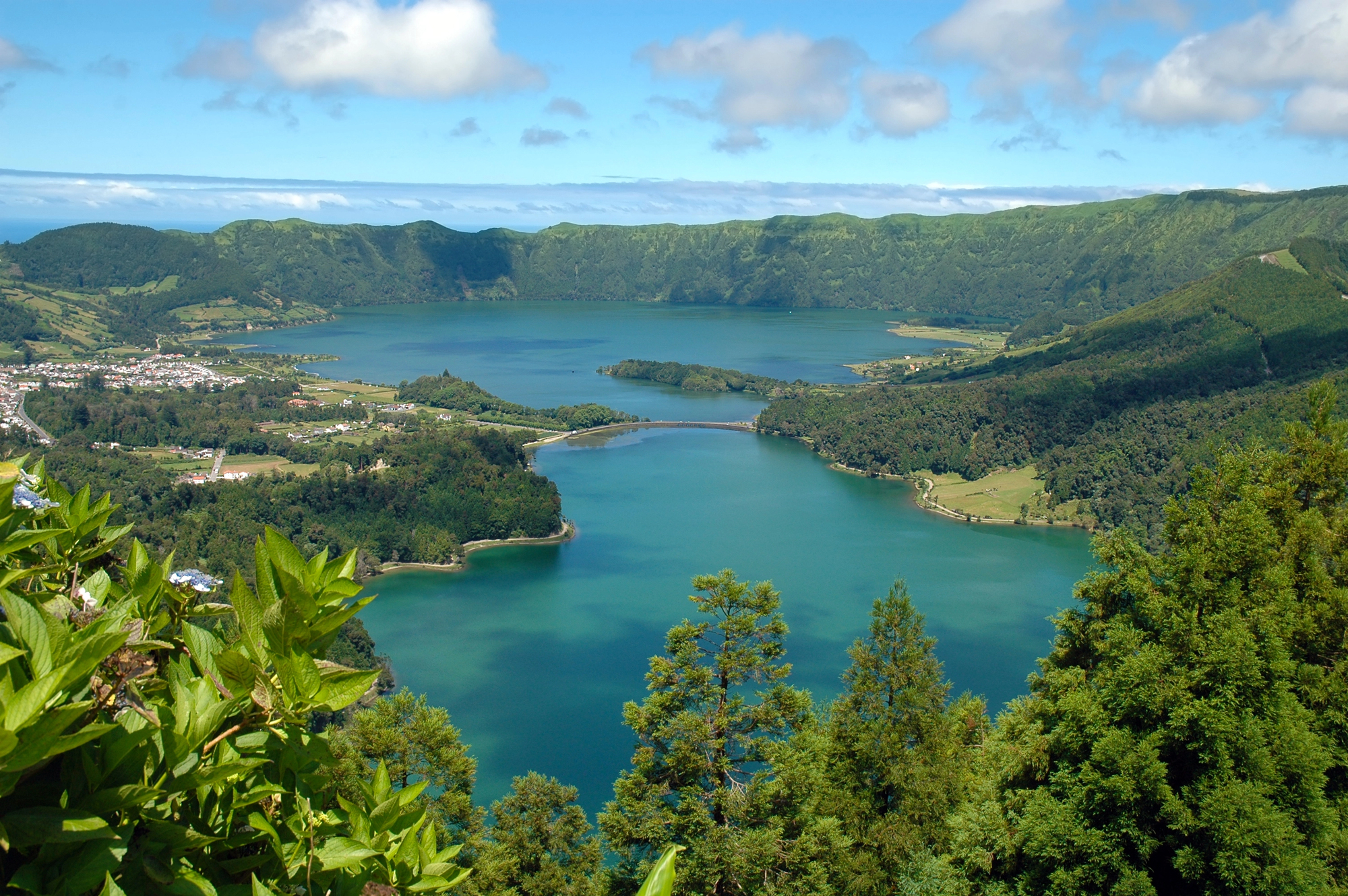
This iconic hike around the rim of São Miguel’s most famous volcanic crater offers breathtaking views of the twin lakes that fill the ancient caldera below. The larger green lake and smaller blue lake create one of the Azores’ most photographed scenes, though scientists say the color difference is mainly due to light reflection rather than different mineral content.
The 7-mile circular trail follows the crater rim through a landscape of rolling hills blanketed with pastures and endemic vegetation. On clear days, you can see across the entire western end of São Miguel Island, with the Atlantic Ocean stretching endlessly in all directions.
Pico Mountain Summit Trail
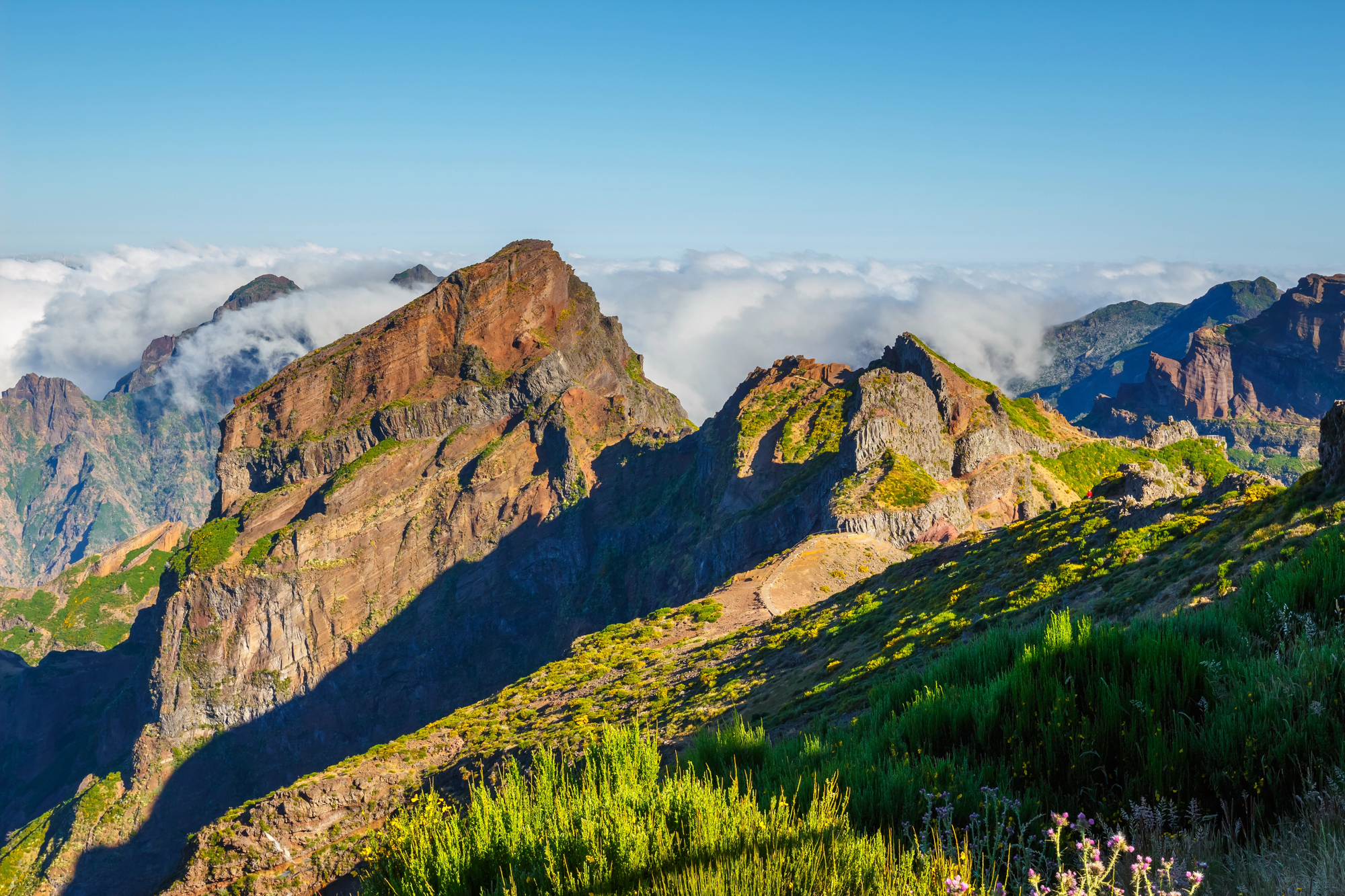
Standing at 7,713 feet, Pico Mountain is Portugal’s highest peak and an active stratovolcano that last erupted in 1720. The challenging summit hike takes you through multiple climate zones, starting in coastal vineyards and ending on a barren volcanic peak often shrouded in clouds.
The final approach involves scrambling over sharp volcanic rock known as ‘bagacina,’ which can easily damage hiking boots. Reaching the summit crater on a clear day rewards hikers with panoramic views across the entire Central Group of islands, with Faial and São Jorge visible across the channels.
Lagoa do Fogo Crater Lake Trail
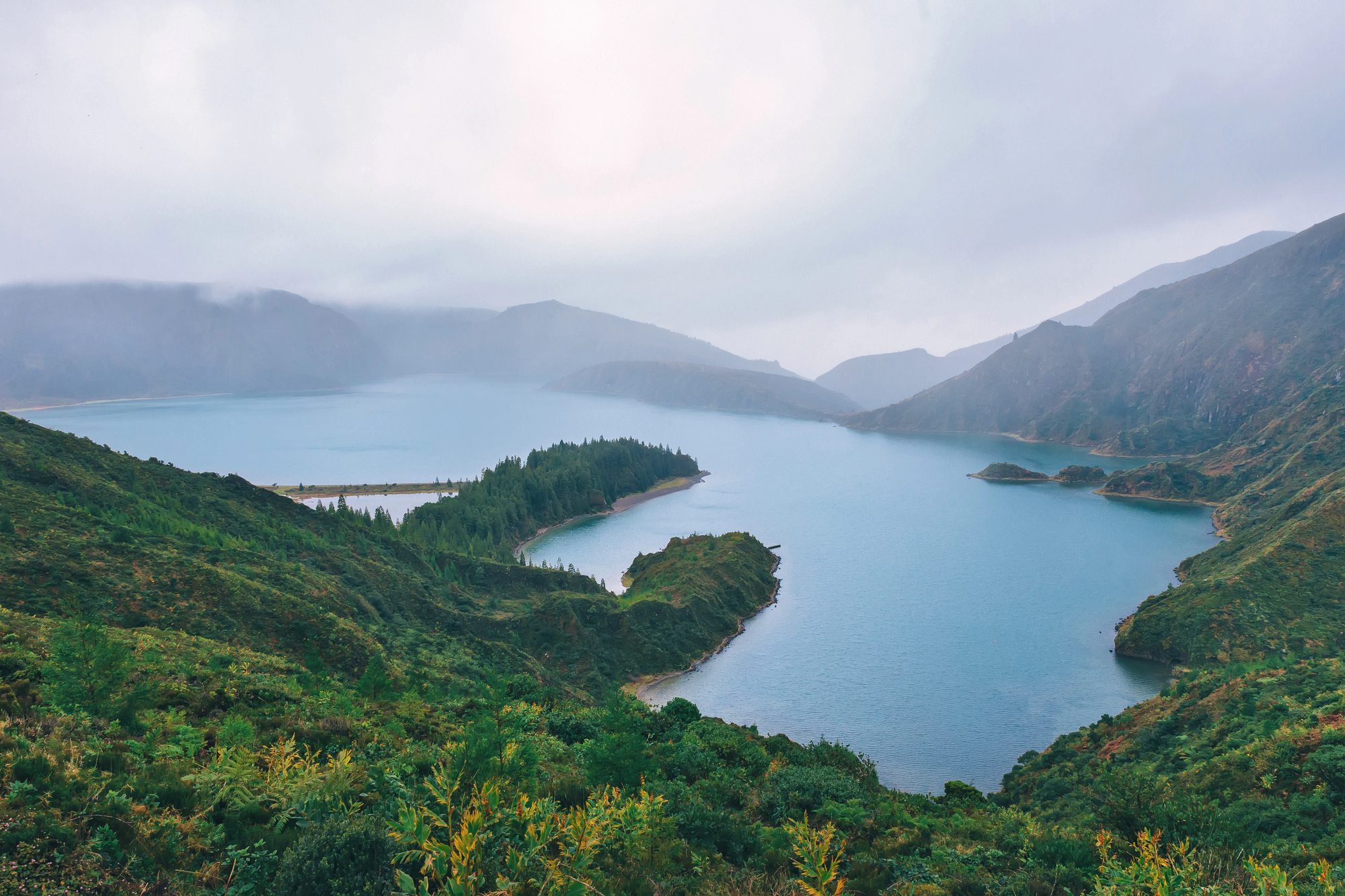
The hike to Fire Lake on São Miguel takes you into one of the Azores’ most pristine volcanic environments, where a crystal-clear lake fills an almost perfectly circular crater. The trail descends steeply through native vegetation that includes endemic species found nowhere else on Earth.
The lake itself sits at 1,870 feet elevation and is completely undeveloped, creating mirror-like reflections of the surrounding crater walls on calm days. This area represents one of the few places in the Azores where you can experience the landscape much as it existed before human settlement.
Like Travel Pug’s content? Follow us on MSN.
Furnas Valley Geothermal Walk
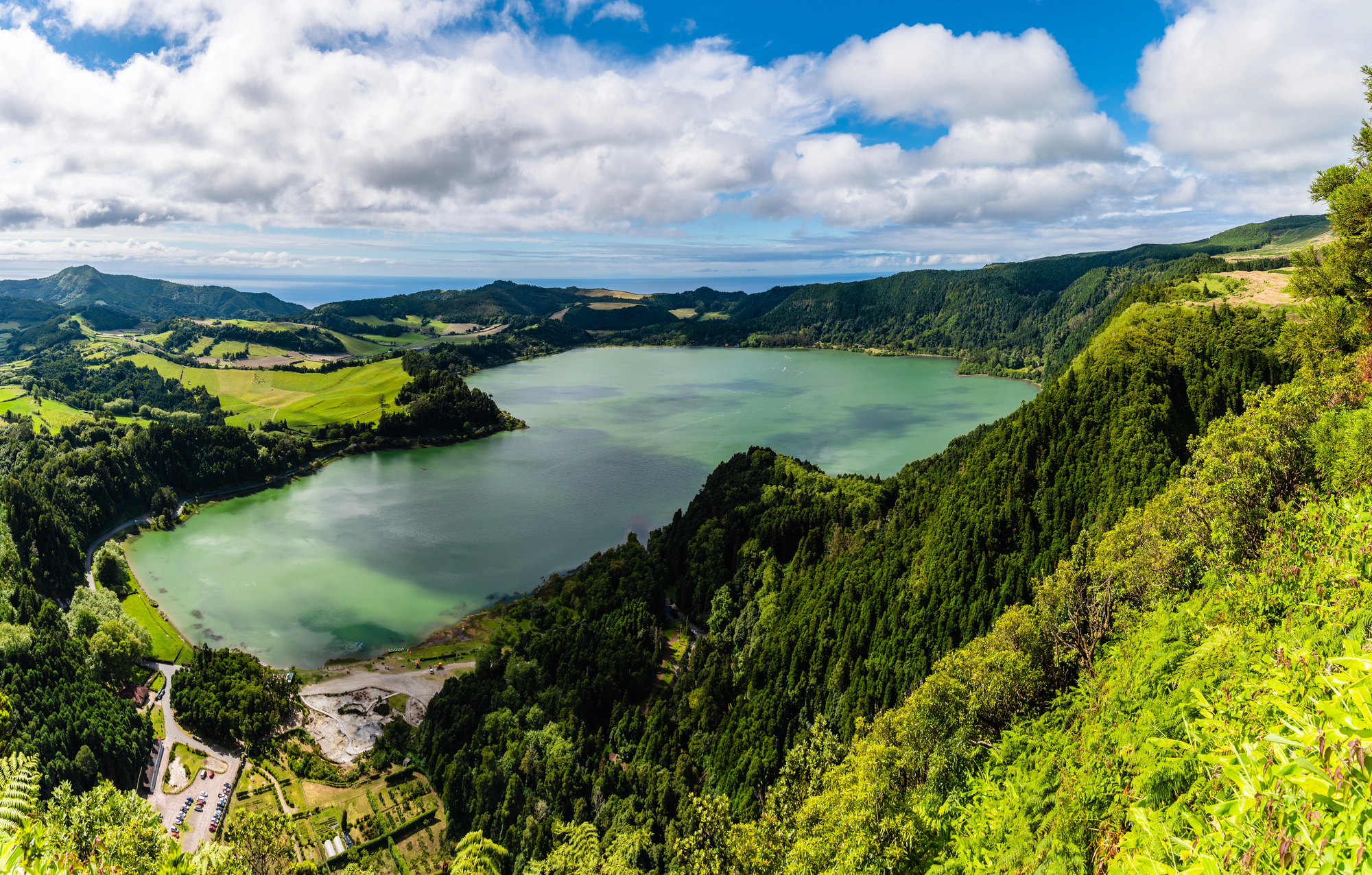
This unique hike through São Miguel’s most active geothermal area takes you past bubbling hot springs, steaming fumaroles, and the famous caldeiras where locals cook traditional cozido stew underground. The volcanic activity here is so intense that the ground temperature can reach dangerous levels, making it essential to stick to marked trails.
The route passes through Furnas village, where you can see how residents have adapted to living in an active volcanic environment for centuries. The combination of geothermal features and lush valley vegetation creates an almost tropical atmosphere despite the latitude.
Faial Caldeira Circumnavigation
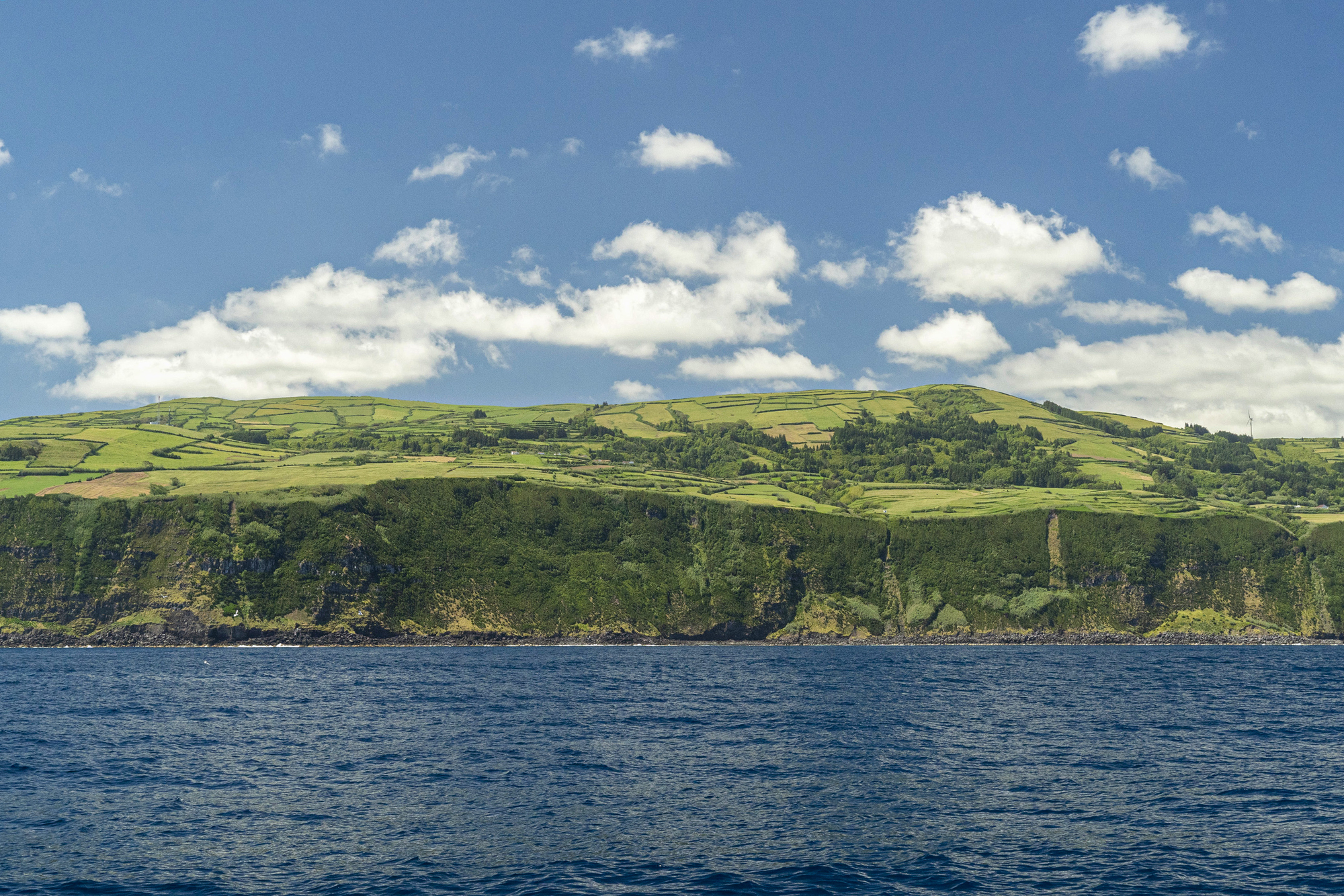
The massive crater on Faial Island offers a spectacular 4-mile rim walk through one of the Azores’ most impressive volcanic formations. The trail follows the edge of a crater that’s nearly a mile wide and 1,300 feet deep, covered in dense vegetation that turns brilliant colors during autumn months.
Endemic plants thrive in the crater’s protected microclimate, including several species of juniper and heather found only in the Azores. The hike also provides excellent views of neighboring Pico Island and its towering volcanic peak across the narrow channel.
São Jorge Fajãs Coastal Trail
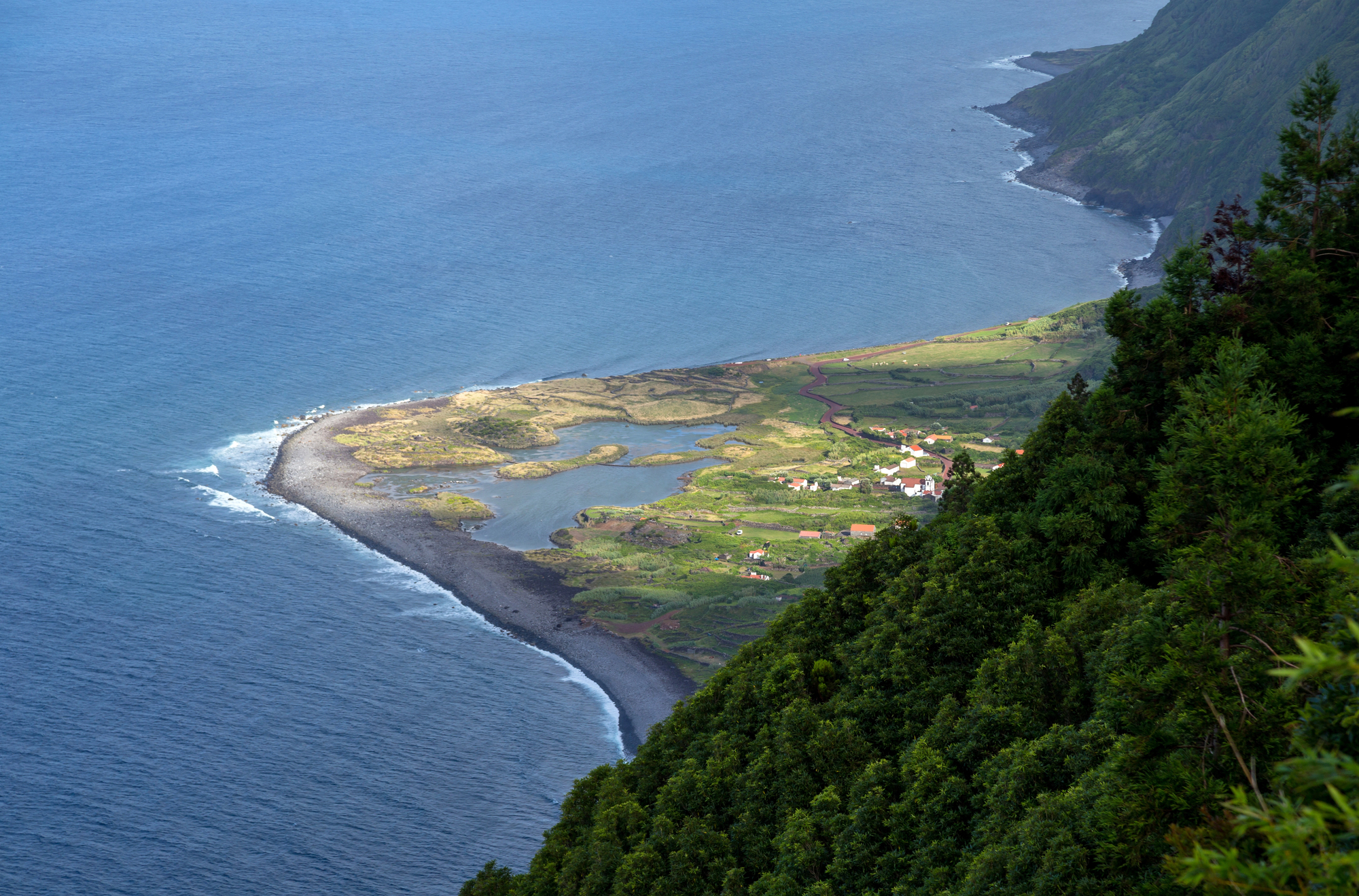
This dramatic coastal hike on São Jorge Island takes you to several fajãs—flat coastal areas created by ancient lava flows and landslides that form unique microclimates at sea level. The trail descends steep volcanic cliffs through paths carved into solid rock, offering heart-stopping views of the Atlantic crashing against black volcanic shores below.
Each fajã has its own character, from the lagoon at Fajã dos Cubres to the natural swimming pools at Fajã da Caldeira do Santo Cristo. The isolation of these coastal settlements means they’ve preserved traditional Azorean culture and agriculture that has disappeared elsewhere.
Like Travel Pug’s content? Follow us on MSN.
Terceira Algar do Carvão Lava Tube
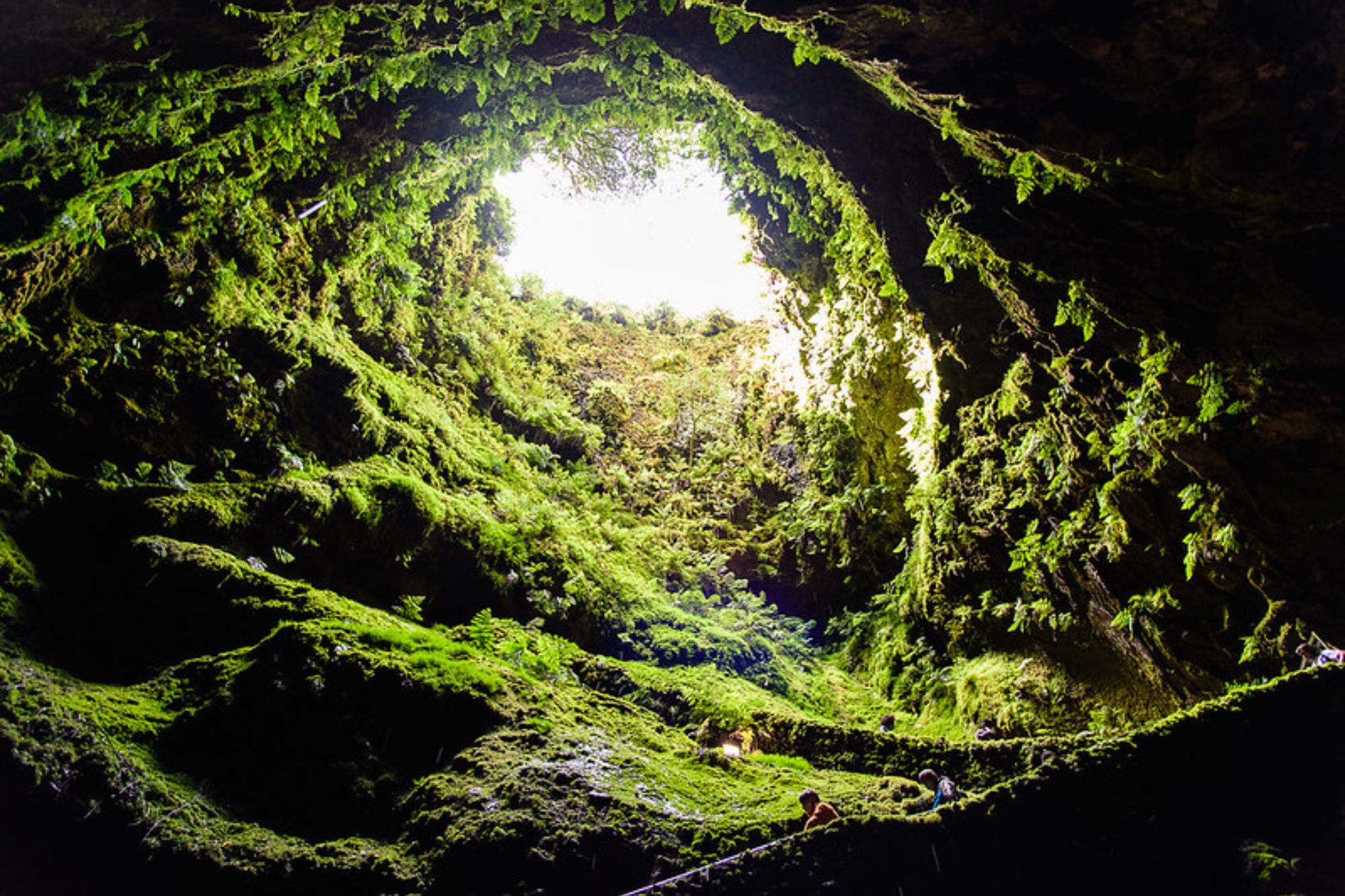
This underground volcanic hike takes you deep inside an ancient lava tube that formed during eruptions 3,200 years ago. The descent into the tube is like entering a natural cathedral, with the ceiling soaring 130 feet overhead and stalactites formed by mineral deposits dripping from the volcanic rock.
The bottom of the tube contains a small lake fed by rainwater that has percolated through the porous volcanic rock above. This geological formation is extremely rare worldwide, making it one of the most unique hiking experiences available anywhere in Europe.
Mistério da Prainha Lava Flow Trail
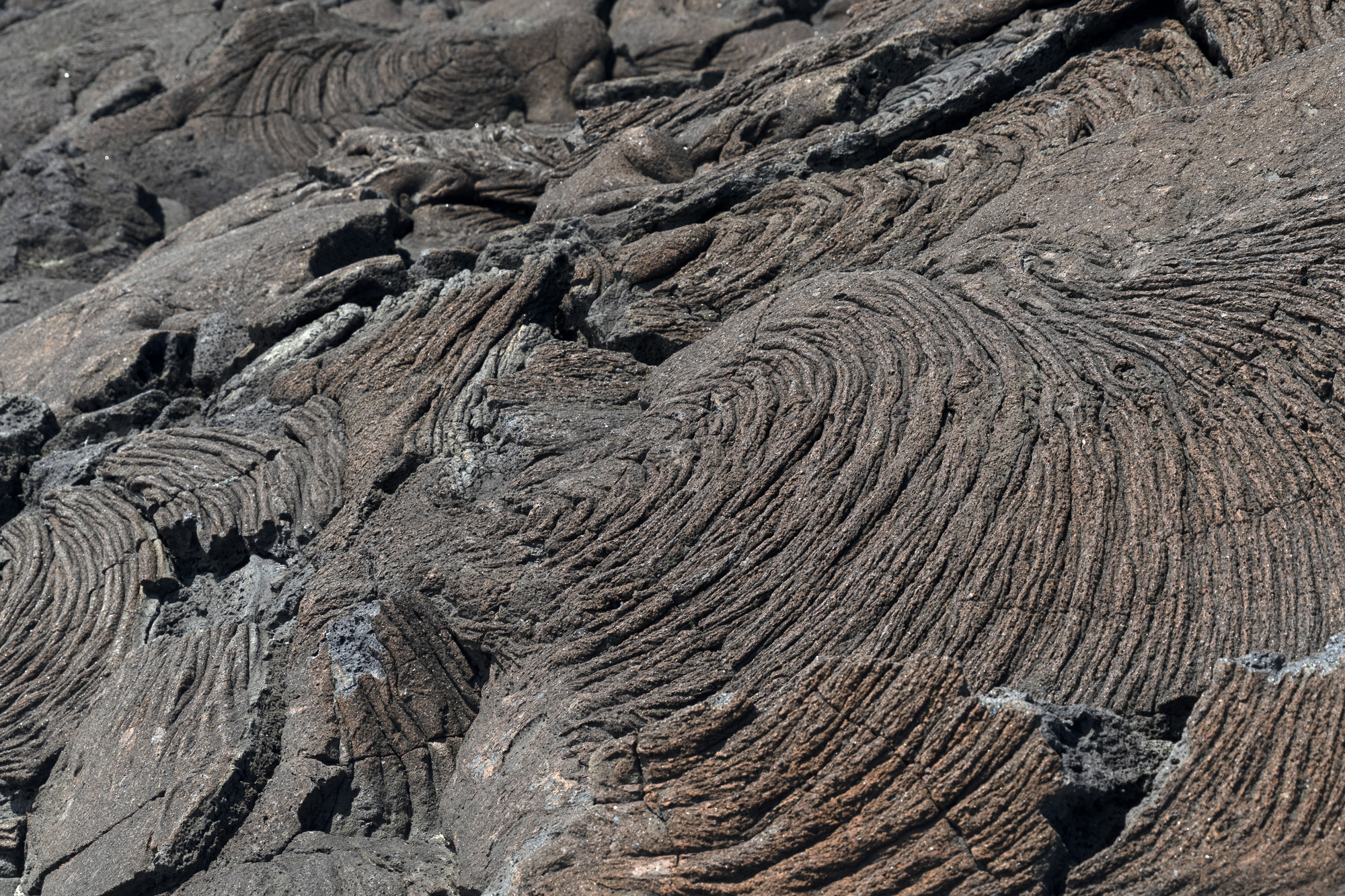
This fascinating hike on Pico Island follows the path of the most recent major eruption in the Azores, which occurred in 1562-1564 and created a dramatic landscape of solid black lava flows. The trail winds through what locals call the ‘mystery’ landscape, where hardened lava created bizarre formations that look like frozen rivers of black stone.
Pioneer plants have slowly begun colonizing the harsh volcanic surface, creating pockets of green life amid the dark rock. The contrast between the jet-black lava and the bright blue Atlantic creates some of the most striking scenery in all the Azores.
Flores Poço da Ribeira do Ferreiro
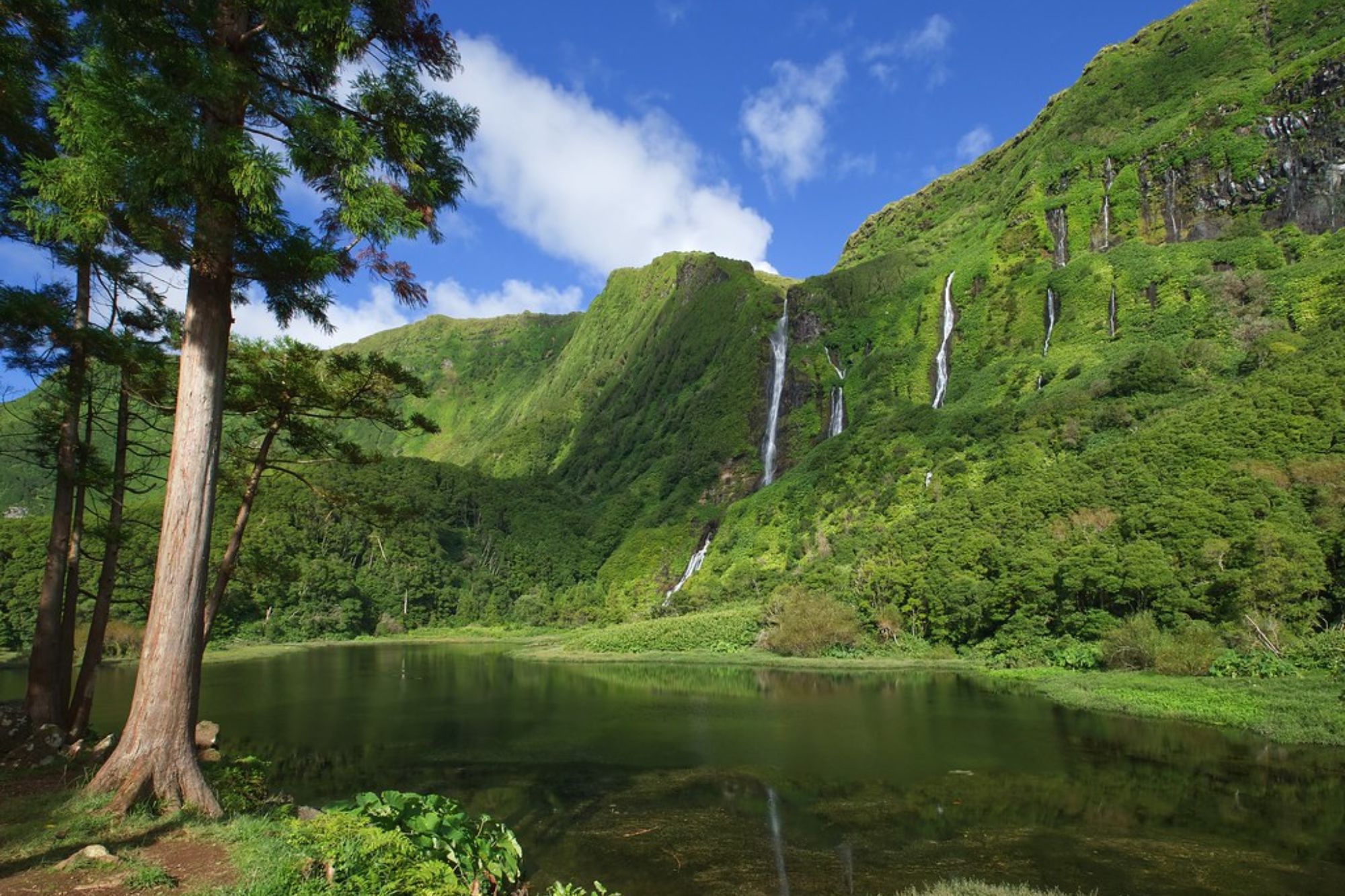
This waterfall hike on the remote island of Flores takes you through volcanic landscapes to one of the Azores’ most spectacular waterfalls, where multiple streams cascade over ancient lava cliffs. The trail passes through endemic laurel forests that thrive in the island’s misty climate, creating an almost prehistoric atmosphere.
The final destination features dozens of waterfalls tumbling into a deep volcanic pool surrounded by towering cliffs covered in rare endemic plants. Flores Island receives more rainfall than any other part of the Azores, creating the lush conditions that support this incredible waterfall system.
Like Travel Pug’s content? Follow us on MSN.
Santa Maria Barreiro da Faneca Red Desert
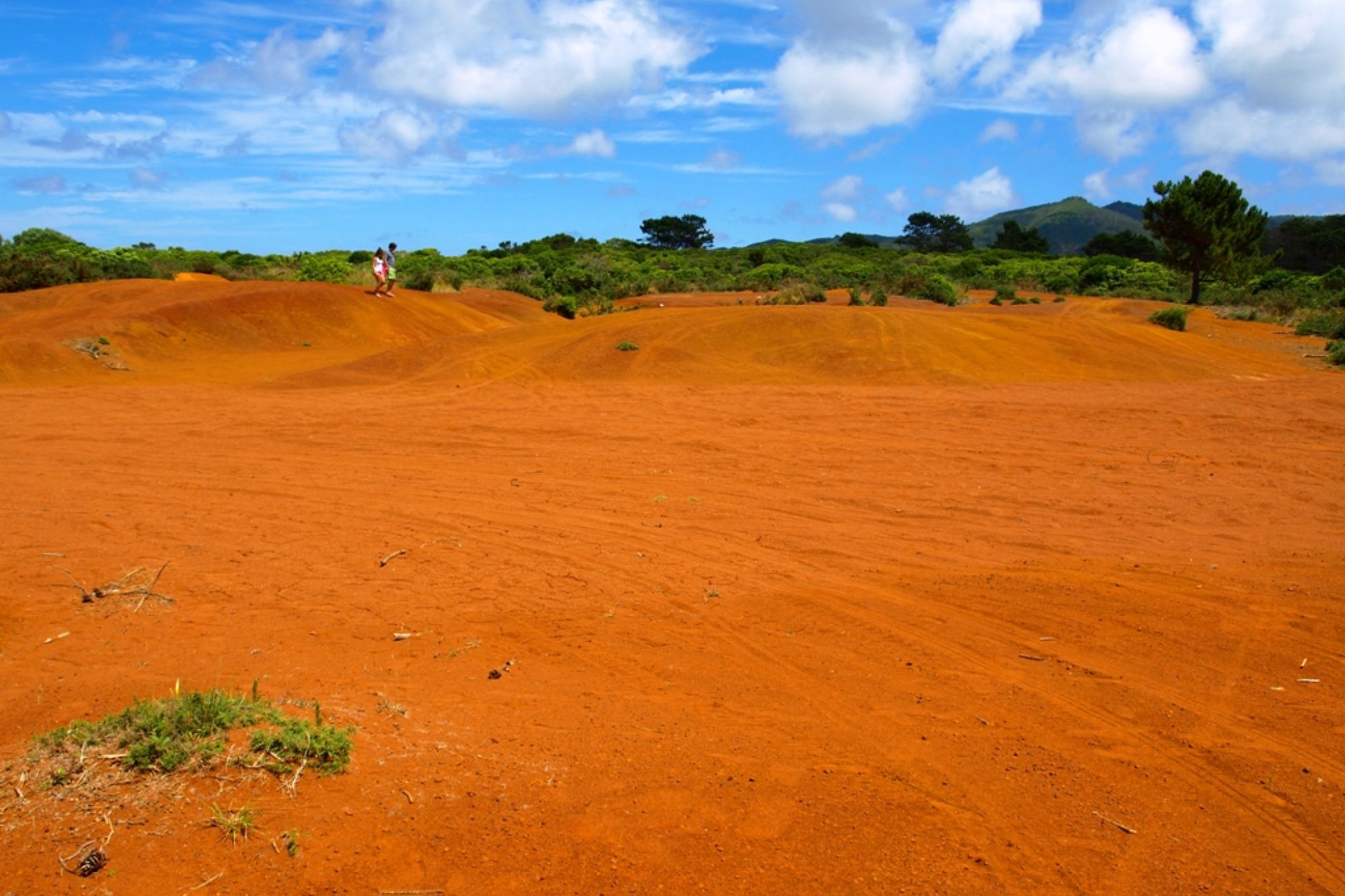
This unique hike on the Azores’ oldest island takes you through a landscape of red volcanic clay that looks more like Mars than Portugal. The unusual coloration comes from iron-rich volcanic deposits that have oxidized over millions of years, creating a desert-like environment unique in the Atlantic.
The trail offers panoramic views across the island’s rolling hills and down to pristine beaches where fossilized marine organisms prove the island’s ancient volcanic origins. This area represents some of the oldest exposed volcanic rock in the entire Azores archipelago.
Graciosa Furna do Enxofre Sulfur Cave
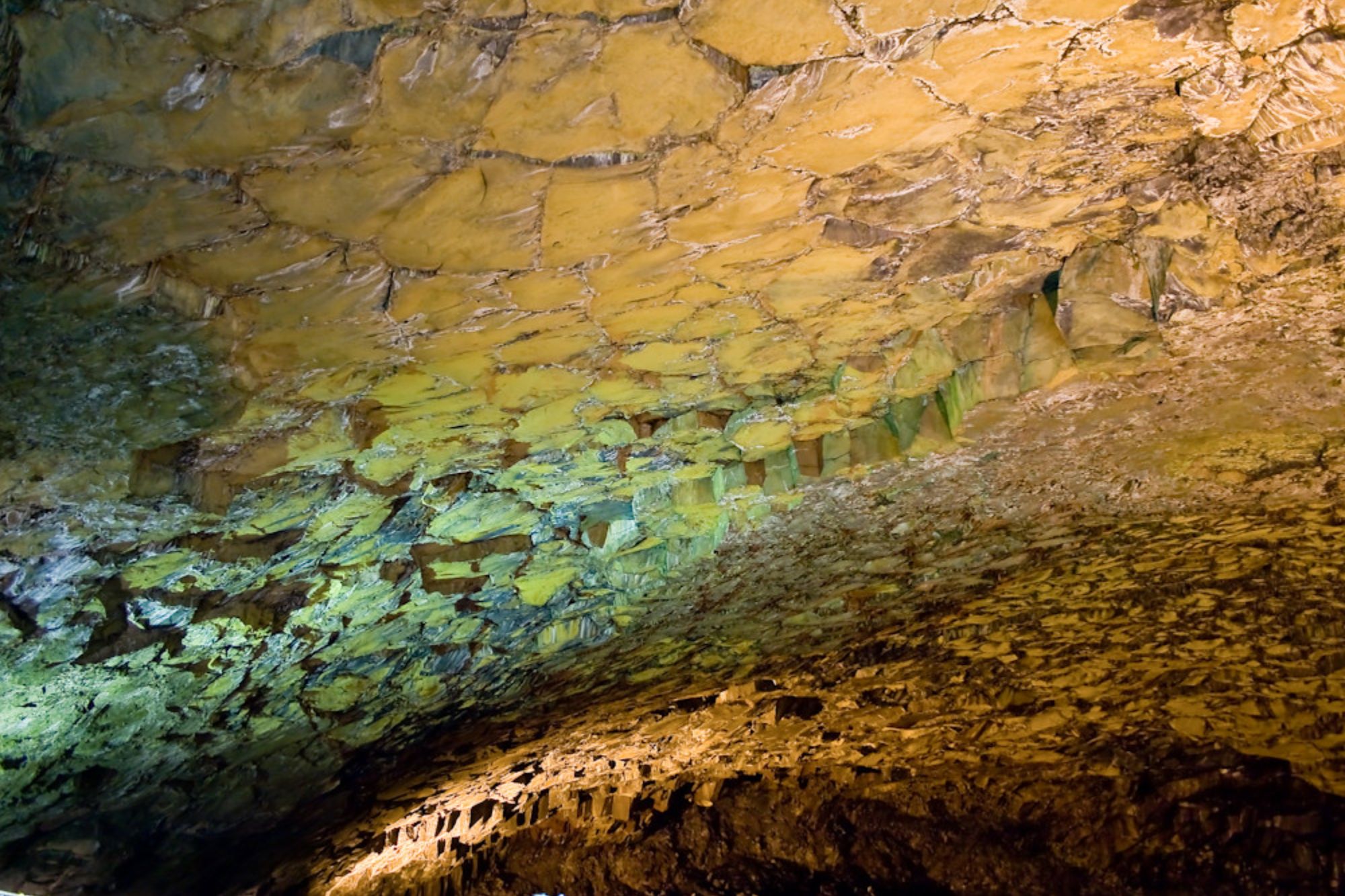
The descent into this massive volcanic cave on Graciosa Island takes you into one of the largest underground chambers in the Azores, complete with a sulfurous lake and active fumaroles. The cave formed when part of an ancient lava tube collapsed, creating a cathedral-like space with natural skylights illuminating the sulfur-stained walls.
The underground lake maintains a constant temperature year-round and contains mineral-rich water that locals once believed had healing properties. The combination of volcanic geology and unusual lighting conditions creates an otherworldly hiking experience found nowhere else in Europe.
Corvo Caldeirão Crater Exploration

This hike on the Azores’ smallest island takes you into a perfectly preserved volcanic crater that’s home to unique endemic plants and serves as a natural laboratory for studying island evolution. The crater contains several small lakes and wetlands that support rare bird species, including migrants that use the Azores as a stopover during Atlantic crossings.
The isolation of Corvo Island means its volcanic landscapes have remained largely unchanged for centuries, offering insights into how the other Azores islands might have looked before human settlement. The entire island can be explored in a single day, making it one of the most intimate volcanic hiking experiences available.
Like Travel Pug’s content? Follow us on MSN.
São Miguel Lombadas Valley Steam Vents
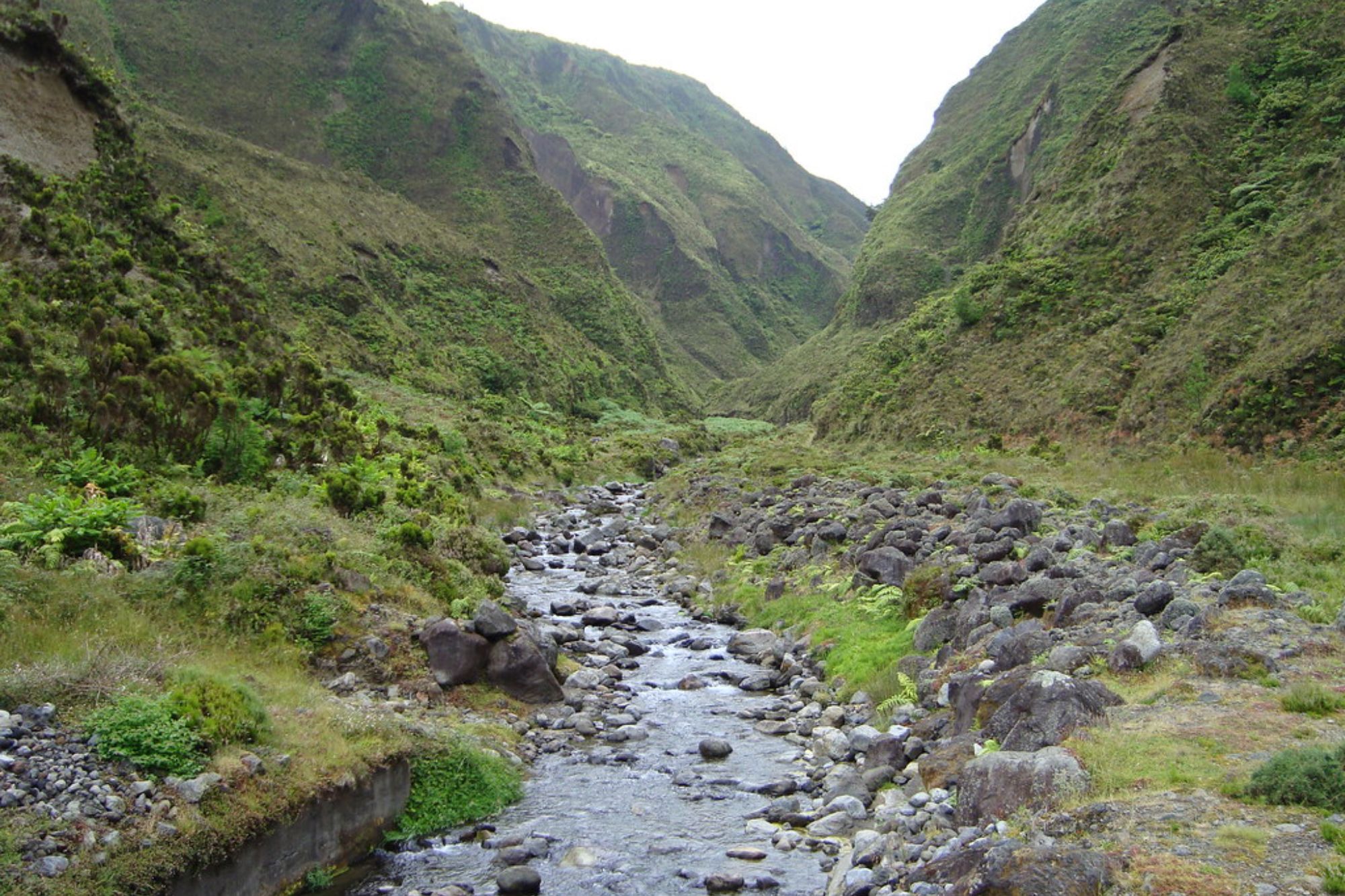
This geothermal hike through the Ribeira Grande area takes you past dozens of natural steam vents where underground volcanic heat creates constant plumes of vapor rising from the earth. The trail follows ancient volcanic ridges that channel geothermal activity to the surface, creating a landscape that steams and bubbles like a natural industrial site.
Local residents have learned to harness this geothermal energy for cooking and heating, demonstrating how humans can adapt to life in active volcanic environments. The surrounding vegetation thrives in the warm, humid conditions created by the constant steam, supporting unusual plant communities.
Pico Gruta das Torres Lava Cave System
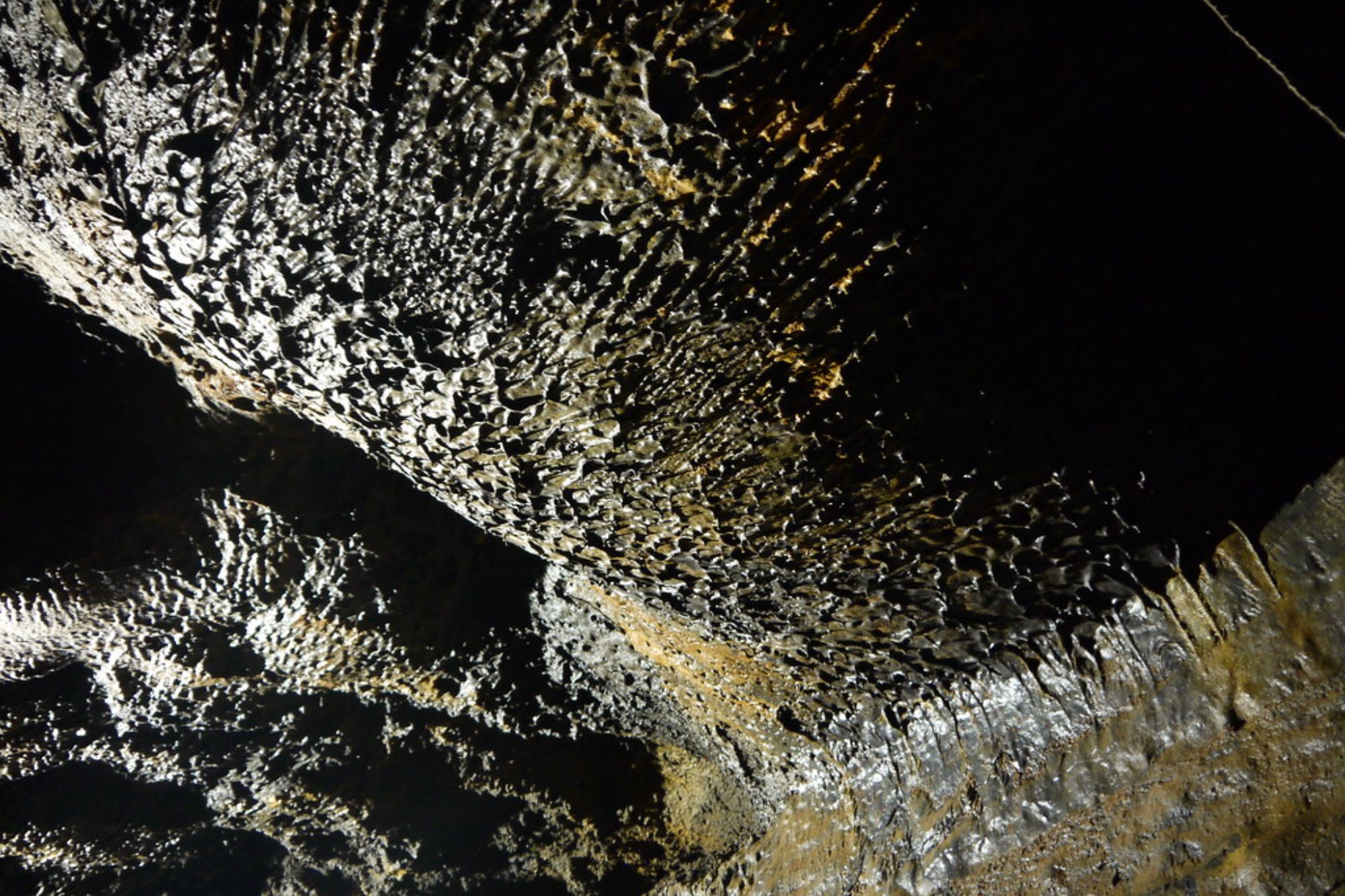
This underground adventure takes you through the longest lava tube in Portugal, stretching over 3 miles through the interior of Pico Island. The cave system formed during relatively recent eruptions when flowing lava created natural tunnels through the volcanic landscape.
Different sections of the cave showcase various volcanic processes, from smooth-walled tubes where lava flowed rapidly to chambers where slower-moving lava created unusual rock formations.
Terceira Monte Brasil Peninsula Walk
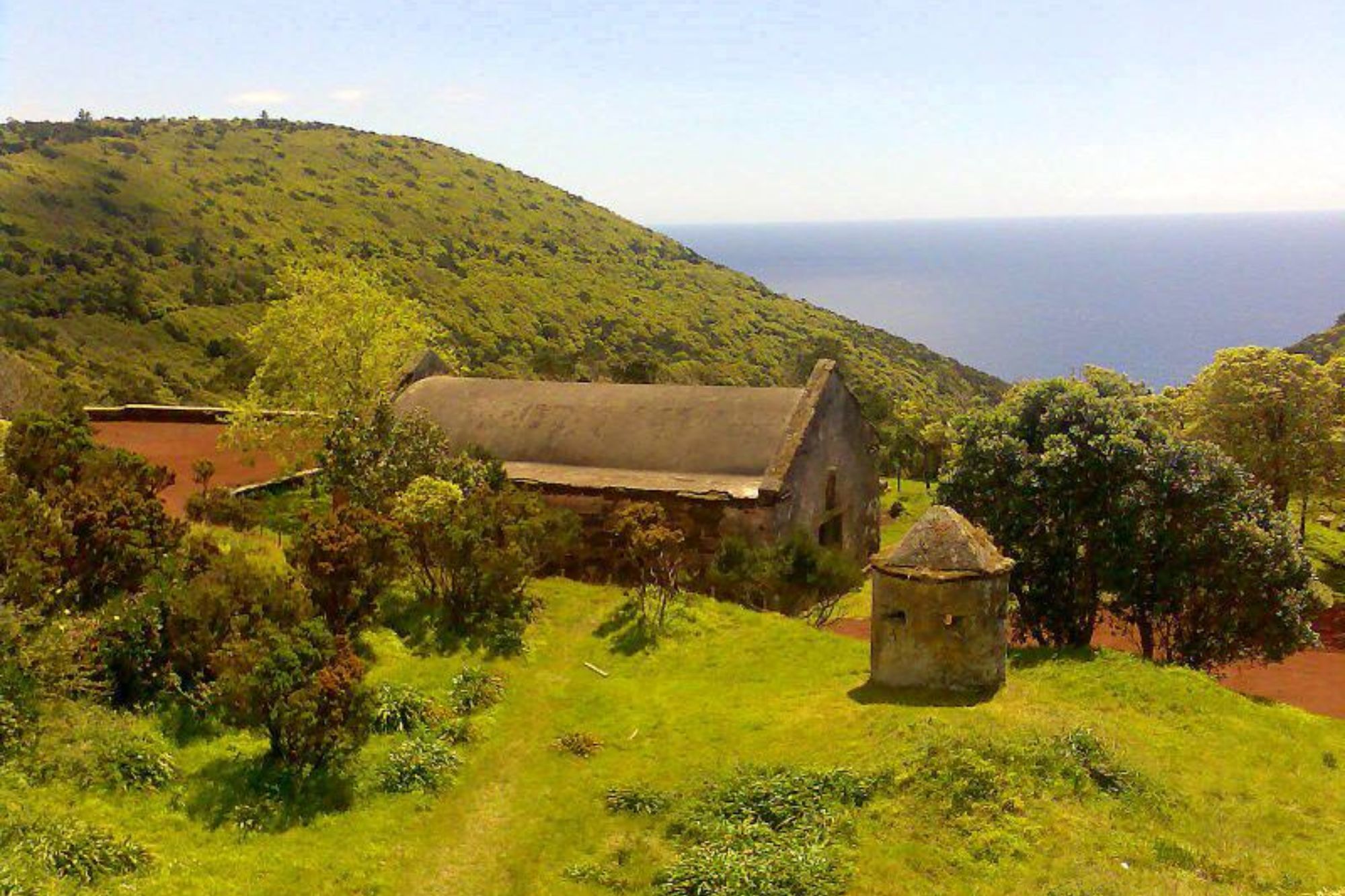
This coastal volcanic hike explores a peninsula formed by ancient volcanic activity, offering spectacular views across Angra do Heroísmo’s UNESCO World Heritage harbor. The trail follows the rim of an extinct volcanic crater that’s now covered in endemic vegetation and serves as a natural park within the historic city.
The peninsula’s position jutting into the Atlantic creates dramatic clifftop viewpoints where you can watch ships navigating the channel between Terceira and neighboring islands. Historical fortifications built into the volcanic landscape demonstrate how humans have used natural volcanic features for defense throughout the centuries.
Like Travel Pug’s content? Follow us on MSN.
São Jorge Pico da Esperança Summit
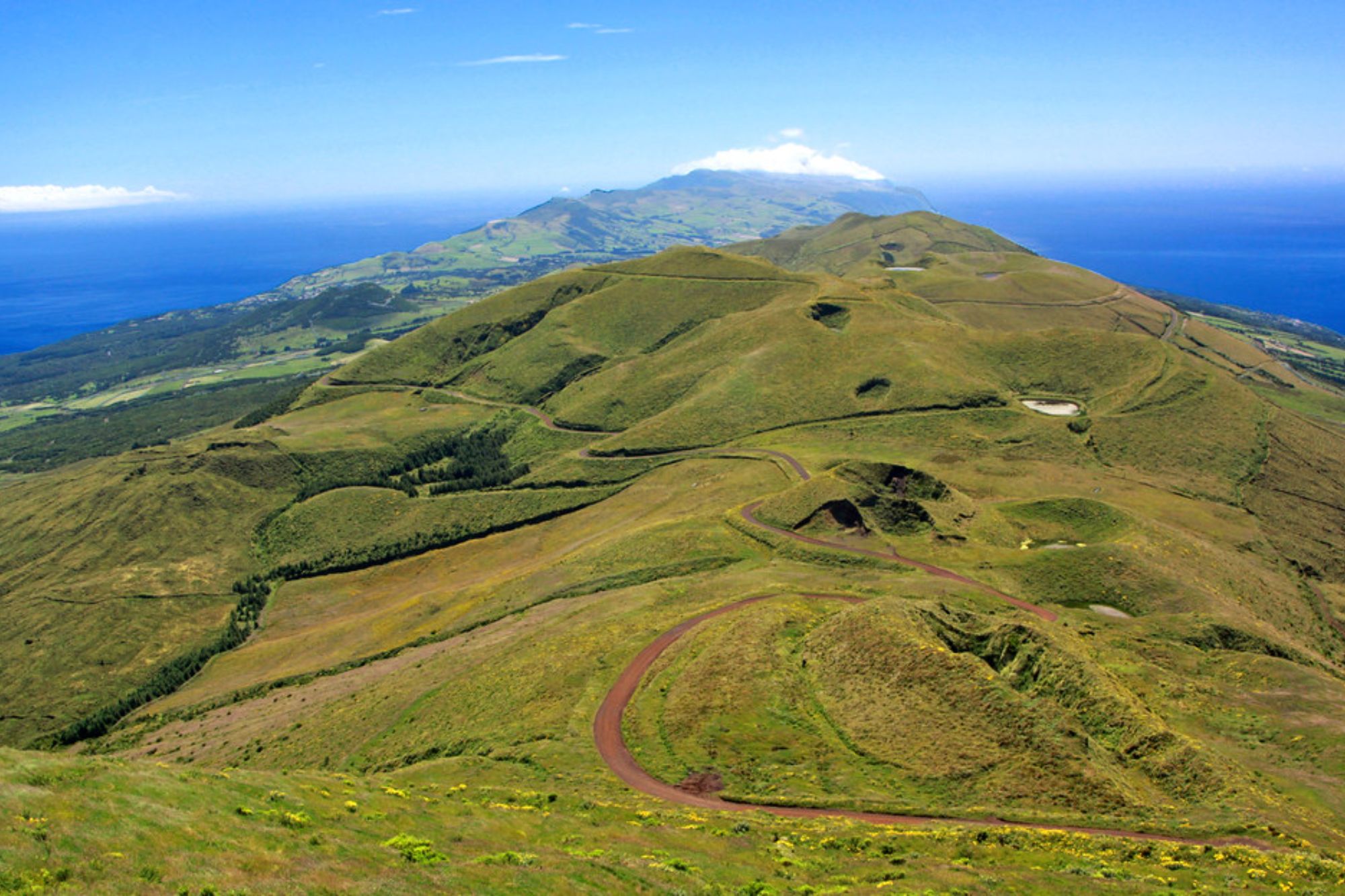
The highest point on São Jorge Island offers one of the most challenging and rewarding volcanic hikes in the Azores, with panoramic views across the entire Central Group of islands. The trail climbs through multiple vegetation zones, from coastal pastures through endemic forest to barren volcanic slopes near the 3,425-foot summit.
Clear weather reveals views spanning from Faial and Pico in the south to Graciosa and Terceira in the north, with the vast Atlantic stretching endlessly in all directions. The summit area contains the remains of ancient volcanic craters that demonstrate the complex geological history of this elongated island.
Faial Capelinhos Volcanic Landscape
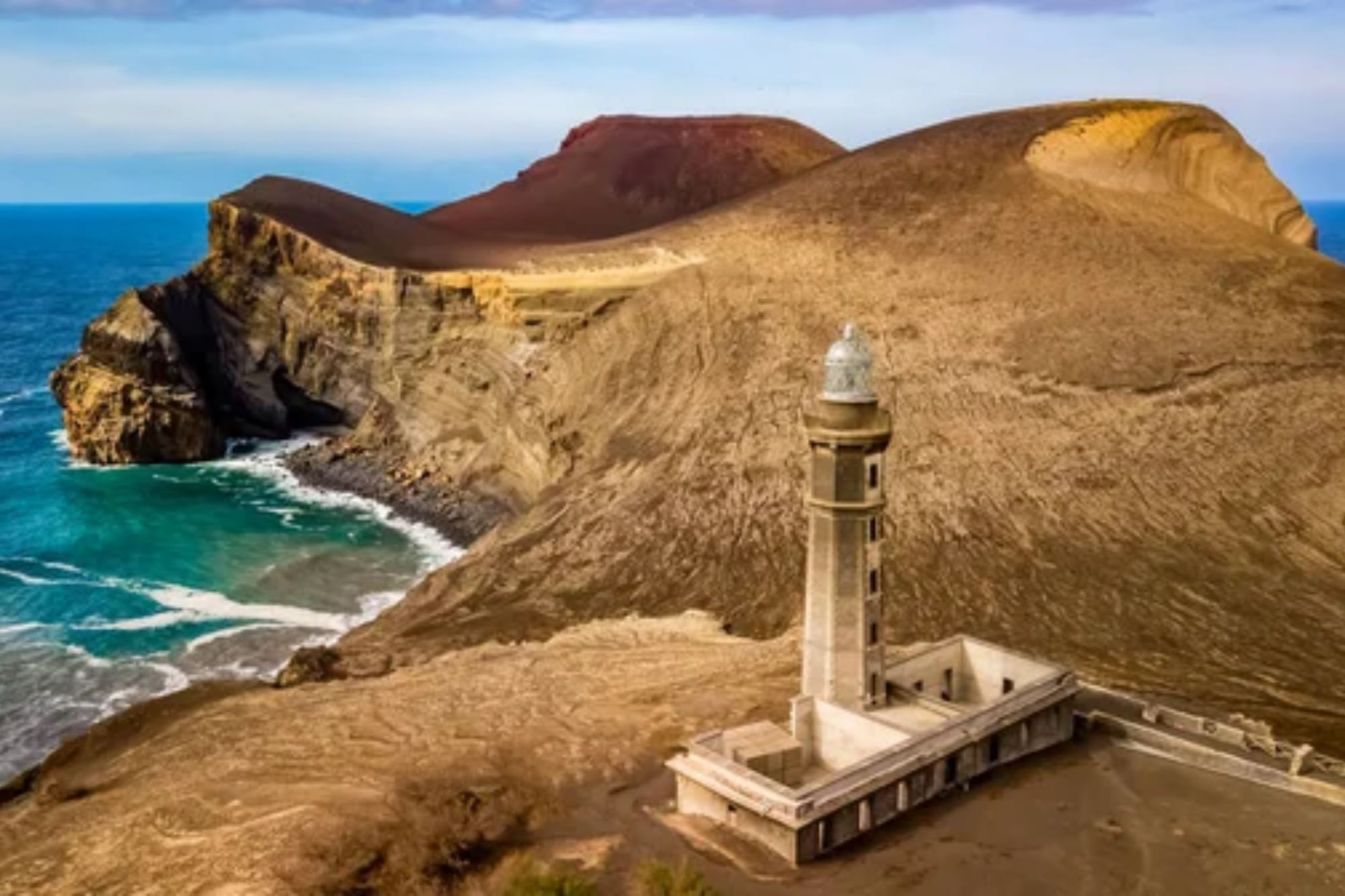
This relatively new volcanic landscape was created during the dramatic 1957-1958 eruption that added new land to Faial Island and buried an entire lighthouse under volcanic ash. The hiking trail takes you across moonscape-like terrain of black volcanic sand and ash that still shows little vegetation nearly 70 years after the eruption.
The preserved lighthouse now serves as a museum explaining the eruption’s impact on local communities, many of whom were forced to emigrate to North America. This area provides a unique opportunity to see how volcanic islands grow and change, with new land still settling and compacting decades after its creation.
Flores Rocha dos Bordões Basalt Columns
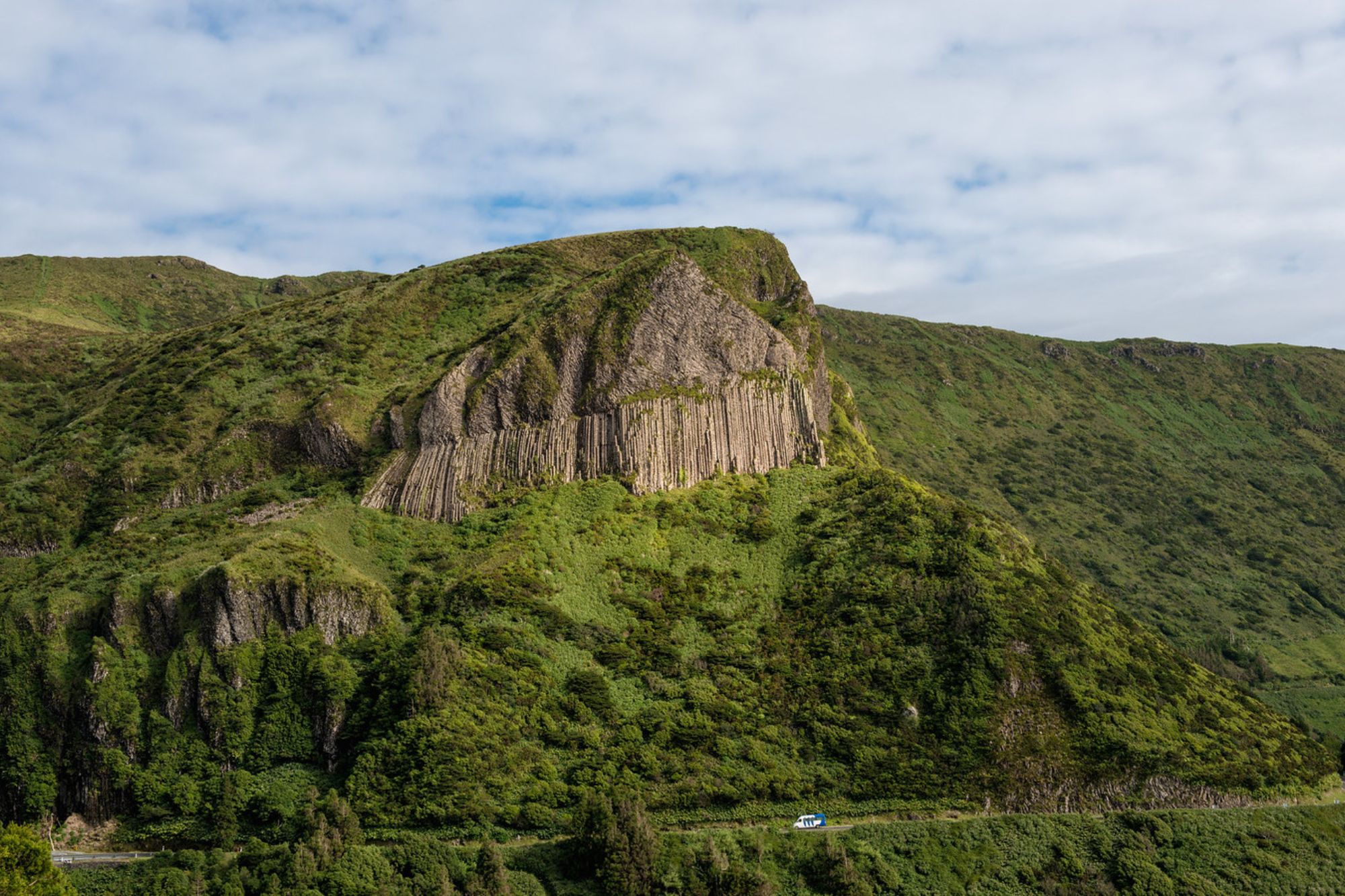
This geological wonder hike takes you to spectacular basalt columns formed by ancient volcanic activity, creating natural stone pillars that rise like a giant’s pipe organ from the landscape. The perfectly formed hexagonal columns demonstrate how slowly cooling lava can create geometric patterns that seem almost too perfect to be natural.
The trail approaches the columns through endemic laurel forest that thrives in Flores’ misty climate, creating a mystical atmosphere around these natural monuments. The surrounding area also features several small volcanic lakes and traditional stone walls that show how local communities have adapted to this dramatic landscape.
Like Travel Pug’s content? Follow us on MSN.
Living Landscapes of Fire and Water
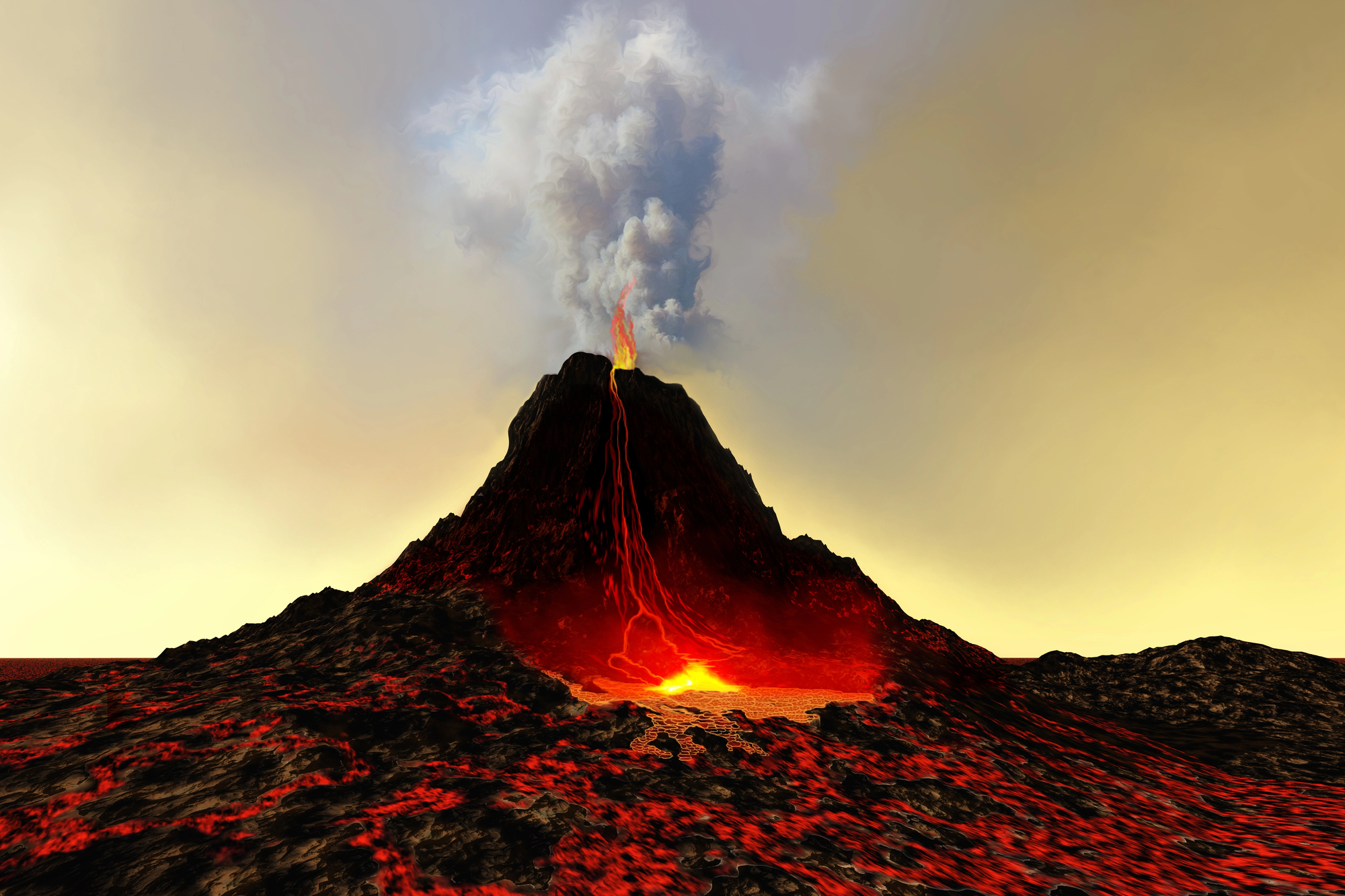
These volcanic hikes represent more than just scenic trails—they’re journeys through active geological processes that continue shaping the Azores every single day. The islands exist because of their position over a volcanic hotspot in the mid-Atlantic Ridge, where the Earth’s crust remains thin and magma can reach the surface relatively easily.
Many of the trails described here cross landscapes that didn’t exist a few thousand years ago, while others explore volcanic features that could theoretically become active again without warning. The ongoing volcanic activity creates the hot springs, mineral-rich soils, and dramatic topography that make the Azores such a unique hiking destination, while also reminding visitors that they’re walking across one of the most geologically active regions in Europe.
These trails offer intimate encounters with the fundamental forces that built our planet, wrapped in the lush beauty of Atlantic islands where volcanic soil and ocean climate create perfect conditions for both endemic species and unforgettable hiking adventures.
More from Travel Pug

- 20 Best Beach Towns in the Carolinas
- 13 Destinations Where Tourists Regularly Regret Their Trip
- 20 Destinations That Are More Magical Without an Itinerary
- 20 Underrated Adventures That Belong on Your Travel List
- 20 Cities Where You Should Just Wing It, No Planning Required
Like Travel Pug’s content? Follow us on MSN.
